The content of the article
Interestingly, in the Russian sector of the Internet, articles are written by people or parrots? You simply enter a query in the search engine and on the same page of the issue you read the same thing. However, the authors do not even bother to understand the topic.
For example, how to water aloe at home? Absolutely everything is repeated one after another: in the winter once a month, in the summer - once a week. Drain excess water from the drip tray. And that’s all. The information is over.
What excess water? Where are they from? Aloe is a resident of arid desert areas. There is never surplus. Otherwise, why would a plant need such thick, juicy leaves?
If you fill the flower to excess, then in the near future it will simply rot on the vine. And how many more nuances when watering aloe at home! Let's figure it out.
What water should be
No doubt, aloe is a fairly unpretentious plant. It will grow contrary to all recommendations. But it can develop even better! First, turn on the logic. Where does water come from in the arid regions of Africa? Right, out of thin air. That is, dew or rain. There is no tap water there at all.
So, watering aloe at home should be water, as in nature. How to get such a liquid? Everything is very simple:
- Pour water into any container and leave for 12 hours. Stir occasionally.
- Then gently drained from the precipitate.
- Pour into a clean plastic bottle or a dense plastic bag.
- Freeze through.
- Thaw and leave at room temperature.
The resulting water is as reminiscent of natural rain or dew from the air.
Tip. Water for watering aloe is not boiled. Boiling rain does not pour out of the clouds. And the content of free oxygen in boiled water is very low, and the amount of unnecessary chemical compounds is off the charts.
Watering aloe by season
If we are planning to grow a beautiful healthy aloe, then the conditions of watering should be as close as possible to natural. However, as are the conditions of detention.
In the natural environment, the amount of water received by a plant varies depending on the time of year. Subtropical deserts differ from the usual ones in that in winter there are no severe cold, and in the spring short heavy rains occur. And from now on we will begin.
Spring. Showers are rare, very strong, but short. Usually, during the spring period, aloe gains so much water in tissue cells that its own weight increases several times. But then these reserves are enough for almost a year, until the next rainy season.
Therefore, we water the plant directly from above, with a quick sharp movement, directly from the watering can. You can put the pot in a pot or bowl. We pour water for 2-4 seconds, no more. The liquid should be completely absorbed by the root system, and not drain into the pan. Frequency - 1 time in 3-4 days. They splashed like rain and enough. Watering is done after 12 noon, but until 19 hours. It was at this time that the weather most often rages in nature.
Summer. There is severe heat during the day and weak heat at night. The temperature difference leads to the fact that in the evening, heavy dew falls. Here it also serves as watering for aloe. There is no rain at all.
So, water accordingly. In the evening, before dark, spray the plant with prepared water. How much to spray? Of course, it’s not possible to fill the soil through, it’s better not to direct the spray nozzle at all. Well, dew in nature has been seen for sure - that's exactly what we spray.
The plant should be completely covered with microscopic droplets. We stop when we notice the first drop falling down the leaf or stalk. Frequency - daily throughout the summer.
Be sure to wipe the leaves from dust.Otherwise, spraying will make your aloe spotty and ugly. Just try not to wash the wax coating. This is a kind of protection against sunburn. Without this plaque, the leaves turn red, which greatly spoils the appearance of the bush.
Fall. Gradually, the difference between day and night temperatures is reduced. Accordingly, the amount of dew falling out daily decreases. The temperature drops slightly, so the plant evaporates less moisture.
Every day we continue to spray aloe from the spray bottle. Thus, we create artificial dew. No watering, let alone immersion of the pot in water. You can not reduce the amount of dew, because until we lower the ambient temperature. Moreover, at this time the heating is already on, the air in the room is dry. And in the fall this is not typical in natural conditions.
Winter. The subtropical winter in such deserts resembles the end of September or the beginning of October in the middle zone. It is cool, but dry and clear. There is no rain at all, dew is very rare. You can say - late Indian summer.
In winter, we do not water aloe. Absolutely. Not a drop. Do not worry, our plant has drunk plenty in the spring. But this is only when the content is as close to natural as possible. That is, the ambient temperature is from +15 to + 19 ° C. Such conditions are optimal in winter for aloe.
Unfortunately, in an ordinary apartment, the ambient temperature is always above + 21 ° С. This is due to central heating. This content is not characteristic of the usual winter for aloe. Therefore, the plant has to spend more moisture from thick leaves for proper photosynthesis and good breathing.
So you still have to water aloe several times during the cold season. But, again, do not literally water it. It is necessary to make at least 5 spring rains in three months. This is approximately once every 16 days. Just do not rely on your own memory. Write it down in a diary or put a note on the phone. Then surely do not miss the required moment.
That's all the subtleties of proper aloe watering at home. And then average data will be written for an unclear bush. It is good if aloe is an adult and can cope with an abundance of water in summer. Well, as parrot authors advise.
But what if the plant is young? It does not yet have a powerful broad root system that can cope with excess moisture in the soil. Therefore, the young roots begin to rot, and the soil begins to sour and mold.
Or another outcome. Suppose that the root system has coped with your generosity. What do succulents usually do? They absorb absolutely all available water. And they pump it into stems, leaves. You pour, they pump. And so all summer. Well, if the heat is above + 40 ° C and aloe has time to evaporate the excess.
And if the summer is ordinary, smooth? The thermometer does not show above + 28 ° C. All moisture remains in the cells of the plant. You all water, because it is written on the Internet! Poor aloe almost bursts from the water, the earth in the pot dries, the root system works properly.
Ultimately, your home beautician just starts to rot. What are you doing? That's right, transplant the poor fellow to another soil and ... water!
At the first sign of decay, stop drinking aloe. It may come back and survive despite your care and killing help.
And further. Do not fertilize aloe. Never. In nature, it grows on stones and clay; there is no food there. An excess of minerals and organics will simply kill the plant.
How to water aloe at home? Now you know all the secrets for sure and your plant will be healthy, lush and beautiful.
Video: planting and growing aloe

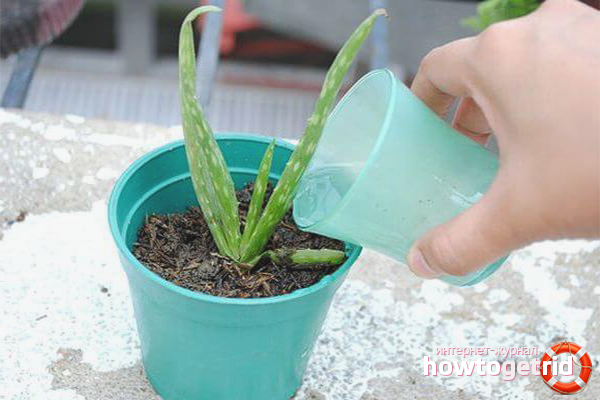
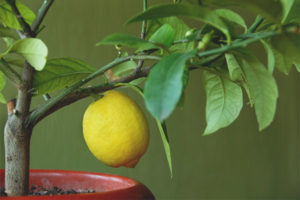
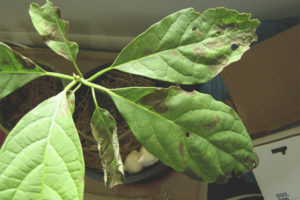


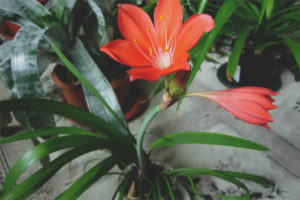
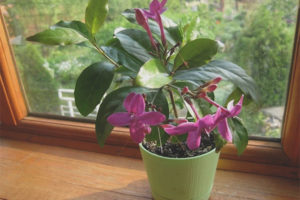
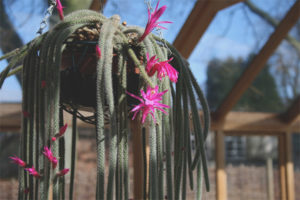
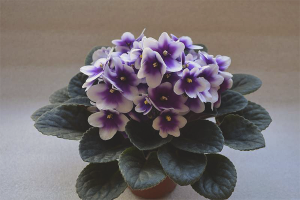
Submit